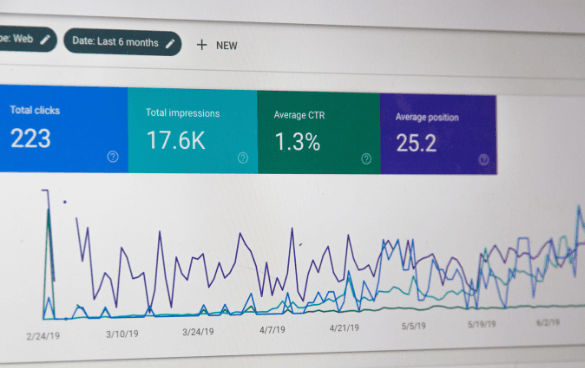Taking Advantage Of Remarketing in Google Analytics: A Comprehensive Overview
Using remarketing in Google Analytics provides businesses a critical edge in reaching out to prospective customers. This overview will lose light on the necessary steps entailed in utilizing the complete capacity of remarketing in Google Analytics, leading to improved advertising results.
Recognizing Remarketing in Google Analytics
Remarketing in Google Analytics enables organizations to tactically target users who have actually previously communicated with their web site or mobile app. By leveraging data from Google Analytics, services can produce customized remarketing listings based upon individual actions, such as pages gone to, actions taken, or particular objectives achieved. This effective tool makes it possible for businesses to re-engage with customers that have revealed passion in their solutions or products, eventually raising the likelihood of conversion.
Comprehending the various sorts of remarketing techniques is critical for a successful campaign - What Is “Remarketing” In Google Analytics?. Google Analytics uses different choices, including standard remarketing, dynamic remarketing, and remarketing listings for search ads (RLSA) Each kind serves an one-of-a-kind purpose and can be tailored to satisfy details marketing objectives
Moreover, assessing the performance of remarketing campaigns is vital for maximizing outcomes. Google Analytics provides valuable insights into the efficiency of different remarketing methods, permitting organizations to make data-driven decisions and refine their targeting approach. By continuously changing and keeping an eye on remarketing efforts based on analytics data, businesses can make the most of ROI and drive success in their marketing initiatives.
Establishing Up Remarketing Projects

After setting up target market checklists, the following action is to link Google Analytics with Google Ads. By linking these 2 systems, services can effortlessly transfer audience checklists from Google Analytics to Google Advertisements for remarketing functions. This combination enables more specific targeting and much better campaign efficiency.
As soon as the accounts are connected, services can produce remarketing campaigns in Google Ads using the target market lists formerly specified in Google Analytics. These campaigns can be tailored with particular advertisement creatives, messaging, and bidding strategies to properly re-engage with previous visitors and drive conversions. By following these actions, companies can leverage the power of remarketing to boost their advertising efforts and raise ROI.
Using Audience Division Techniques

Predefined sections in Google Analytics allow you to promptly examine common target market categories like brand-new users, returning individuals, or customers who finished a details goal on your web site. Custom segments, on the other hand, allow navigate to these guys you to produce one-of-a-kind segments based upon specific requirements that are important to your organization objectives. Dynamic remarketing checklists automatically change based upon user actions, showing individualized ads to individuals that have engaged with your website particularly ways.
Studying Remarketing Performance Metrics
Upon examining the efficiency of remarketing campaigns in Google Analytics, the evaluation of crucial performance metrics supplies valuable understandings into target market involvement and conversion prices. By delving into metrics such as click-through rates (CTR), conversion prices, cost per purchase (CERTIFIED PUBLIC ACCOUNTANT), and return on ad spend (ROAS), online marketers can evaluate the success of their remarketing efforts. Analyzing these metrics enables marketing experts to maximize projects, fine-tune audience targeting, and allocate spending plans properly to improve total remarketing efficiency.
Enhancing Remarketing Strategies
When refining remarketing methods in Google Analytics, concentrating on target market division is vital for achieving campaign success. By splitting your audience right into certain sections based upon their habits, demographics, or rate of interests, you can customize your advertisements extra properly to each group. This targeted strategy check raises the possibility of engaging customers who have currently shown passion in your services or items, resulting in greater conversion rates.
An additional vital aspect of maximizing remarketing techniques is continually testing and refining your projects (What Is “Remarketing” In Google Analytics?). A/B testing various ad creatives, messaging, or offers can aid you identify what resonates ideal with your audience and drives one of the most conversions. By analyzing the performance of these examinations in Google Analytics, you can make data-driven decisions to maximize your remarketing efforts additionally
In addition, leveraging dynamic remarketing can considerably boost your campaign results. This function permits you to show individualized ads to users based on their previous communications with your website, showcasing services or products they have actually formerly seen. By providing customized web content to customers based on their actions and interests, dynamic remarketing can aid raise involvement and drive conversions.
Verdict
In final thought, harnessing remarketing in Google Analytics is a critical approach to target customers who have actually previously involved with a web site. By producing customized target market checklists and using audience division approaches, companies can optimize remarketing advocate increased conversion prices. Examining efficiency metrics and continually maximizing approaches are crucial for taking full advantage of the performance of remarketing efforts.
Google Analytics offers different alternatives, consisting of common remarketing, vibrant remarketing, and remarketing checklists for search advertisements (RLSA)After establishing up audience checklists, the next action is to connect Google Analytics with Google Advertisements. By linking these 2 systems, organizations can flawlessly move target market lists from Google Analytics to Google Ads for remarketing objectives.When the accounts are connected, services can create remarketing campaigns in Google Advertisements making use of the target market provides previously defined in Google Analytics.When refining remarketing strategies in Google Analytics, concentrating on target market division is critical Extra resources for achieving campaign success.